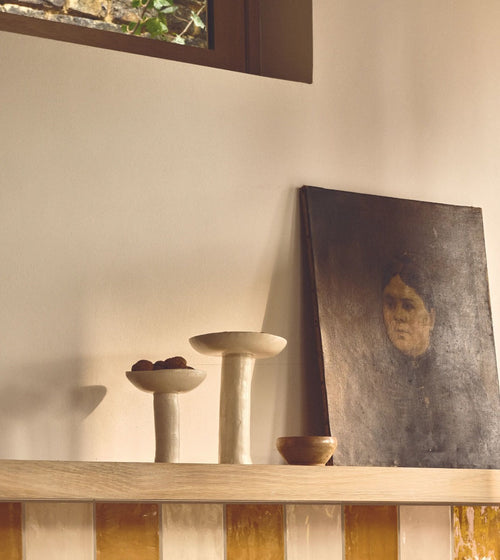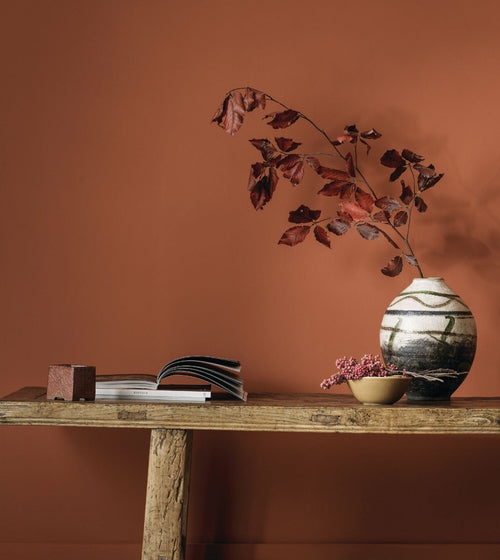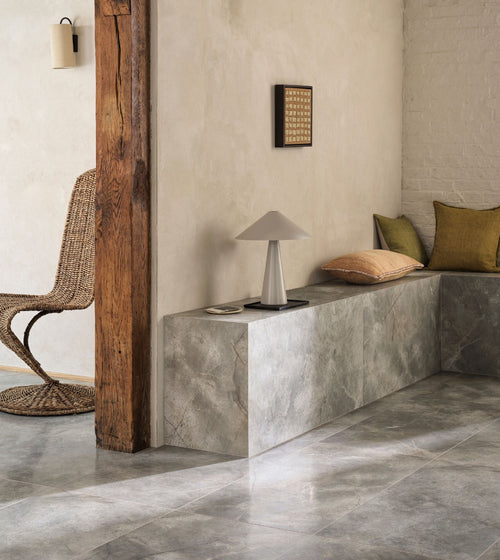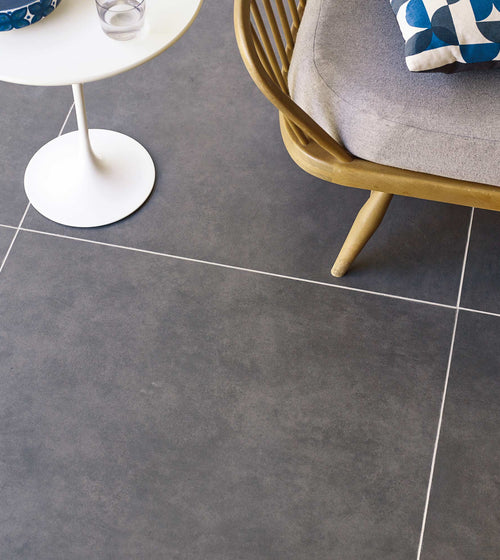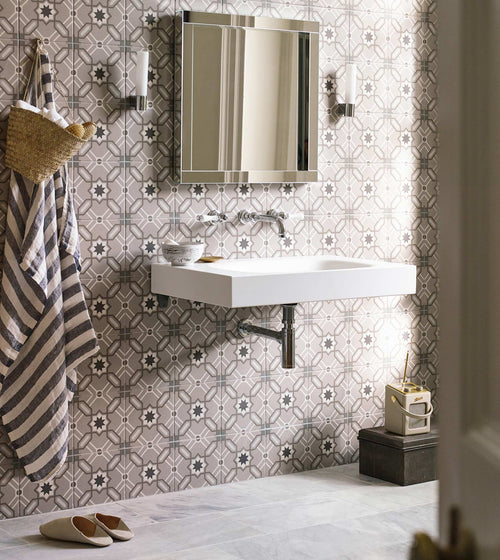What are the advantages and disadvantages of marble? | The pros and cons of marble wall and floor tiles
Marble has long signified luxury and extravagance; particularly white marble with its historic link to the Ancient Greeks. It’s no wonder why it has remained a popular choice amongst homeowners in areas such as bathrooms and kitchens. Before choosing a marble tile range, it is important to ensure that it suits your specific needs and will be the best choice for your home renovations.
In this guide, we’ll explore the advantages and disadvantages of marble tiles, looking at where they are popular and what you should consider.
Click on the link to jump to that section:
- What are the pros and cons of marble floor tiles?
- What are the pros and cons of marble wall tiles?
- Should you choose marble or marble effect tiles?
- Top tips for choosing marble tiles
Decide whether you should buy marble flooring tiles with their benefits and drawbacks.
Find out the benefits and drawbacks of marble tiles for walls.
Compare the benefits of porcelain lookalike tiles against natural marble tiles.
Browse through our top considerations to make when buying marble tiles.
What are the pros and cons of marble floor tiles?
Marble floor tiles are a popular choice for many homeowners looking to add a touch of elegance and sophistication to their interiors. These tiles can be used in various areas of the home, such as bathroom (and wet room) flooring, and kitchens for the classic chequerboard look.
For more information, read our buyer’s guide and recommended ranges of marble floor tiles here.
Browse below the advantages and disadvantages of marble flooring tiles:
Advantages
Renowned for their luxurious look, marble tiles such as Carrara and Calacatta are highly sought after for their distinctive veining and timeless beauty. Carrara marble, originating from Italy, is known for its soft grey hues and delicate veining, making it a classic choice for kitchens. Calacatta marble, on the other hand, features bolder and more dramatic veining with a whiter background, often making it a centrepiece in high-end designs.
The classic look of marble can significantly enhance the aesthetics of a kitchen floor, providing a clean and sophisticated appearance that can complement various design styles, from traditional to contemporary.
Disadvantages
As a porous natural stone, marble requires regular sealing to protect it from stains and damage. This maintenance can be time-consuming and must be done correctly to preserve the stone's beauty. Without proper sealing, marble can absorb spills, leading to permanent stains and discolouration.
Marble can scratch and stain more easily than other materials, making it less suitable for high-traffic areas or homes with young children and pets.
| Pros of marble floor tiles | Cons of marble floor tiles |
|---|---|
|
|
The Blends range allows homeowners to mix and match the look of classic marble with more modern layouts, including triangles, stars and circles.
Browse our entire range of marble floor tiles here.
What are the pros and cons of marble wall tiles?
Marble wall tiles are a luxurious addition to any home, offering a high-end look that can transform spaces such as splashbacks, shower walls, and accent walls.
Browse below the advantages and disadvantages of marble wall tiles:
Advantages
One of the main advantages of marble wall tiles is the unique veining of each tile. No two pieces of marble are exactly alike, which means every installation is unique. This individuality can create a stunning visual impact, making areas like splashbacks and accent walls truly stand out.
The beautiful appearance of marble wall tiles can enhance the overall look and feel of a room. Whether used on a bathroom shower wall to create a spa-like retreat or as a dramatic accent wall in a living room, marble adds a touch of luxury and sophistication.
Disadvantages
One of the primary issues is their susceptibility to stains, which can be particularly problematic in areas such as kitchen splashbacks. If used near hobs or food preparation areas, marble can absorb oils, sauces, and other substances, leading to unsightly stains that are difficult to remove.
Maintaining marble wall tiles can be more challenging compared to other materials. Regular cleaning with specialist products is necessary to preserve their appearance, and the need for periodic sealing adds to the upkeep requirements. This maintenance can be a deterrent for homeowners looking for a low-maintenance option.
| Pros of marble wall tiles | Cons of marble wall tiles |
|---|---|
|
|
The Ottimo range includes marble tiles in both plain tile and mosaic styles, depending on your specific preferences.
Browse our entire range of marble wall tiles here.
Should you choose marble or marble effect tiles?
If you are concerned about marble’s disadvantages, there are alternative tile options that may be more suitable. Porcelain is a highly durable material, easy to maintain, and extremely versatile. The material can replicate certain classic looks, like stone effect, wood effect, and most importantly, marble effect.
Marble effect tiles are becoming increasingly popular, offering many benefits over natural marble tiles. Browse the pros and cons of marble effect tiles compared to natural marble below:
Advantages of marble effect tiles
Marble effect tiles can replicate the look of natural marble, including the distinctive veining patterns, offering a visually appealing alternative. Modern manufacturing techniques have advanced to the point where marble effect tiles closely mimic the appearance of real marble, making it difficult to distinguish between the two. One example of this is our Volterra range which replicates the classic Calacatta look.
Porcelain is less porous than natural marble, as they are made by firing clay at high temperatures, creating a dense and durable material that is highly resistant to moisture and staining. This durability makes marble effect floor tiles an excellent choice for high-traffic areas and rooms prone to moisture, such as bathrooms and kitchens.
Disadvantages of marble effect tiles
Depending on the finish chosen, marble effect tiles can potentially be slippery, particularly when wet. Make sure to look at their finish and its suitability for where you are looking to use them; for example, choose a matt look or a textured finish for a bathroom floor.
Porcelain tiles also tend to have a cold surface, a drawback if you prefer a softer and warmer feel underfoot. This issue can be mitigated by installing underfloor heating, which can provide warmth and comfort, making the tiles more pleasant to walk on.
| Pros of marble effect tiles | Cons of marble effect tiles |
|---|---|
|
|
For more information, read our guide on marble effect tiles and when they are most beneficial here.
Top tips for choosing marble tiles
When selecting marble tiles for your home, there are several factors to consider ensuring you make the best choice for your needs and preferences:
Choosing a popular colour: Marble tiles are available in various colours, including brightly patterned and delicately veined hues. Often, white marble is prioritised due to its luxurious feel.
Think about the location: In bathrooms, marble's porosity means it must be properly sealed for areas exposed to a lot of water. However, it can be an excellent choice for drier areas like hallways, living rooms, or walls.
Bespoke design service: Opting for a bespoke design service can help you achieve a unique and tailored look with your marble tiles. For more information, discover our design services, including 3D visualisations and mood boards, here.
Find a reputable tile company
Fired Earth has become an acknowledged authority on colour and pattern and an expert in design. We stock some of the latest and best materials, including porcelain and marble, suitable for walls and floors. Our design service envisions your ideas to help ensure everything runs smoothly at every stage.
Contact Fired Earth today or visit one of our many showrooms in the UK.
Related content
What Are the Pros and Cons of Porcelain Wall and Floor Tiles?
